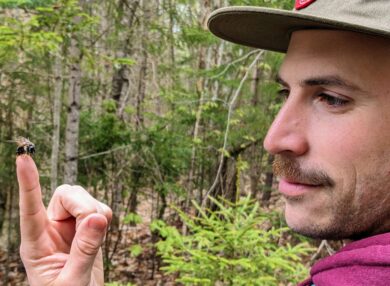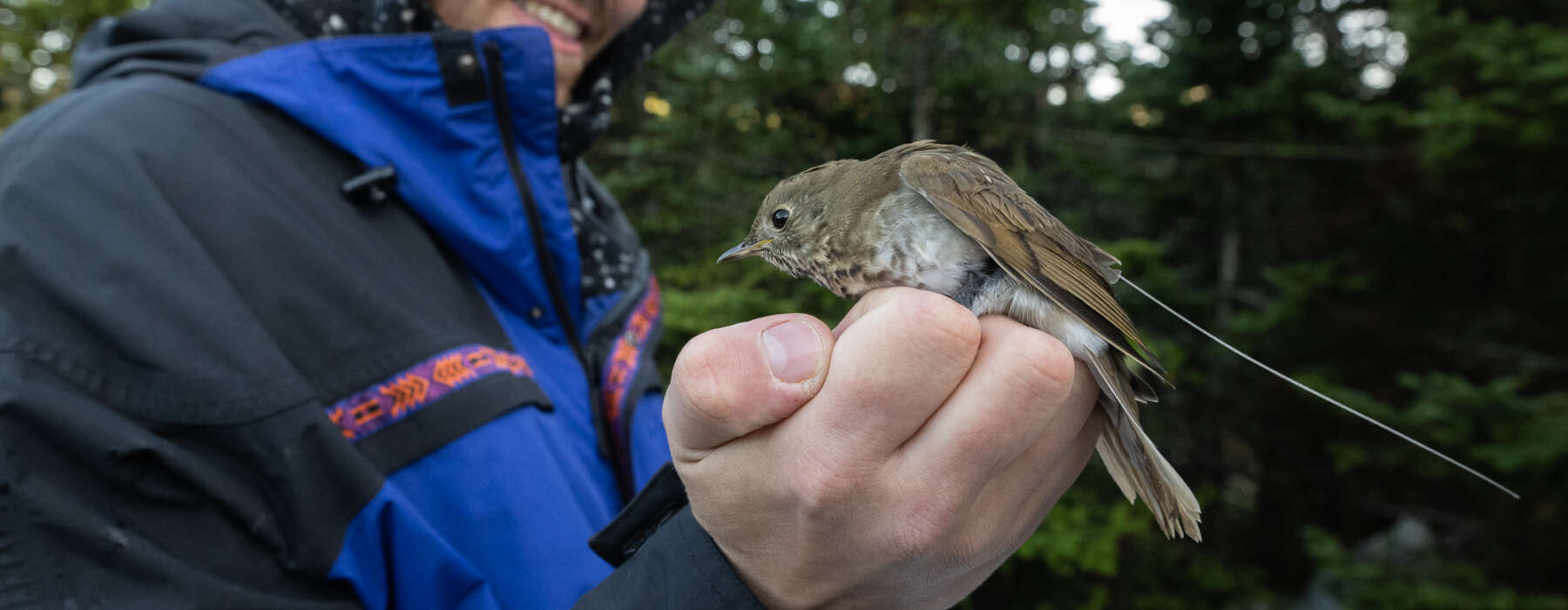VCE has increased the scope and impact of our science by expanding the Vermont Atlas of Life, enhancing long-term monitoring with cutting-edge research, and adding new fields of expertise to our team of conservation scientists. Together with dozens of collaborators, we are building knowledge to generate conservation solutions here and across the hemisphere.
Explore the Vermont Atlas of Life (VAL) to access occurrence maps, species accounts, and open data for more than 14,000 plant, animal, and other species! And discover how findings from VAL’s 10th Anniversary Report can guide conservation activities statewide and inspire biodiversity assessments elsewhere.
Read about breakthroughs in understanding threats to Bicknell’s Thrush survival, the nesting ecology of Hispaniolan birds, and the migratory patterns of Upland Sandpipers, Eastern Meadowlarks, and Grasshopper Sparrows.
Learn how international science collaborations have enabled us to link the rapid northward expansion of Eastern Giant Swallowtails to climate change and to deploy an intercontinental network of AI-powered moth monitoring stations.
Take a look at other ways we’re using innovative technologies to study the response of vernal pool amphibians to climate change, to evaluate the efficacy of prescribed burns in dry oak forests, and to track Bicknell’s Thrush across the hemisphere and verify the accuracy of our predictive spatial model of prime winter habitat.
Find out how we now know that vernal pools are hotspots of mercury bioaccumulation and that mercury concentrations in the blood of mountain-breeding thrushes are below levels known to impair reproduction in other invertebrate-consuming songbirds.
Visit the frontier of invertebrate science as you read about ongoing VCE efforts to rank plant species by their value to pollinators, find out if organic lawn sprays control ticks, and understand the relationship between high-elevation invertebrate and bird populations.
 Check out our Vermont Wild Bees Report, and our atlases for vernal pools, bumble bees, lady beetles, moths, and butterflies to see how we’re expanding the frontiers of atlasing, regularly recording new species for the state, and showing our peers in other states how atlas results can be applied to conservation.
Check out our Vermont Wild Bees Report, and our atlases for vernal pools, bumble bees, lady beetles, moths, and butterflies to see how we’re expanding the frontiers of atlasing, regularly recording new species for the state, and showing our peers in other states how atlas results can be applied to conservation.
Participate in one or more long-term monitoring projects, which inform the design of pioneering research, illuminate emerging threats, and help prioritize conservation actions.
Learn about how VCE collaborates for conservation outcomes.

